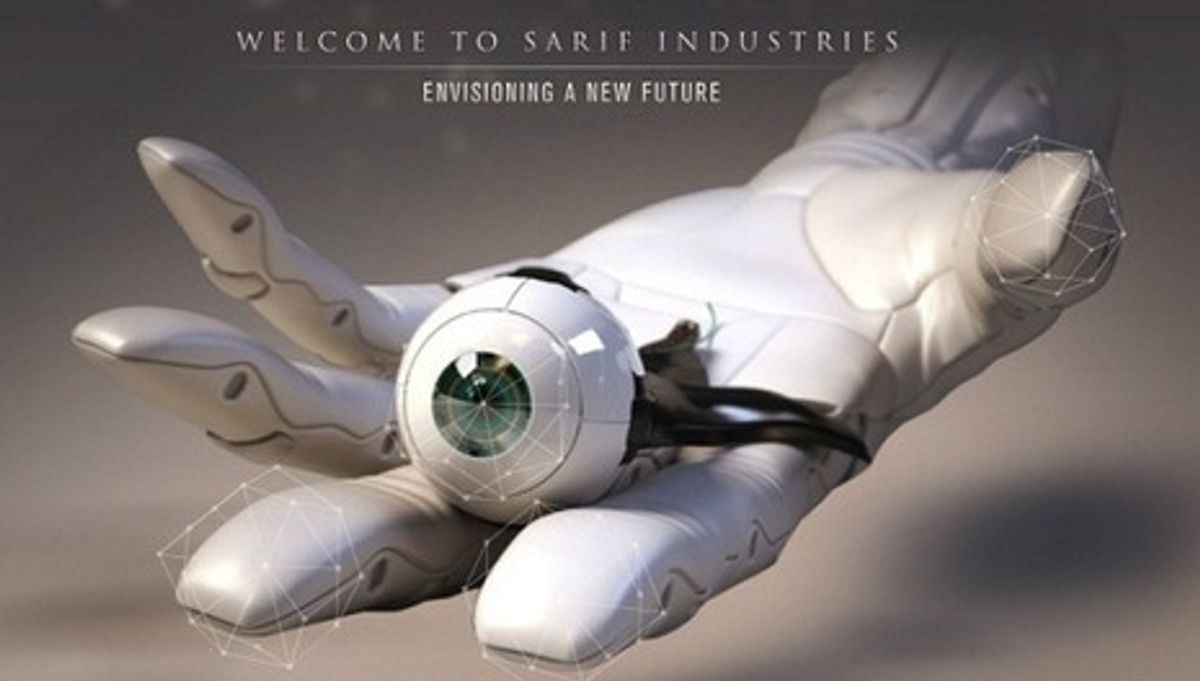Deus Ex: Human Revolution, which releases Aug. 23, has all the accoutrements of sci-fi video games: regenerating body limbs, leaping tall buildings, plunging fists through walls…
But there’s one other element most don’t have: real science.
In 2008, when writers from game developer Eidos Montreal began mapping out the third of its Deus Ex game series, neuroengineer and Deus Ex fan Will Rosellini offered to bolster the scientific plausibility of their story lines.
A former Arizona Diamondbacks pitcher, Rosellini’s fascination with sports performance led him to neuroscience after his athletic career ended. He has since earned a law degree, an MBA, and a master's in computational biology, and will soon have a Ph.D. in neuroscience from the University of Texas at Dallas. He helped launch MicroTransponder in 2007 to commercialize the research of Larry Cauller, a now-retired associate professor of neuroscience, who worked on robotic prosthetics that interfaced with human nervous systems.
The Human Revolution writers tapped Rosellini’s knowledge to portray more believable technology for the year 2027, when its story takes place. They came to the table with a wish list of 30 superhuman abilities for their characters. Rosellini whittled it by a third according to how existing science might realistically evolve, even helping them smooth over a major criticism involving rapid healing of characters.
“Players didn’t like automatic health regeneration, because it made the game easier,” says Rosellini. “But it was a necessary part of a game play feature, so I spent a lot of time examining how vagus nerve stimulation [which exists today as a treatment for depression] could speed the healing process. We added that information to booklets laying around and in e-mails you can see on computers in the game.”
“We wanted to make the science as real as possible—there’s a lot going on with mechanical augmentations so that we could create a credible future,” Human Revolution’s lead writer Mary DeMarle told a San Diego Comic-Con audience last month. “We built a timeline that traces the history of augmentation. We were creating stuff and predicting how it would get out into society. Will opened our eyes to things that we didn’t even dream possible.”
Reciprocally, Rosellini’s video game participation has drawn attention to the real-world possibilities of MicroTransponder’s research.
The firm’s technology is based on the premise that certain disorders arise from over or understimulated nerves, damaged neural pathways, or overallotment of neurons to specific tone frequencies. A small device with a battery is implanted in the upper torso and connects via wire to the vagus nerve, in the neck. The battery delivers an electric pulse through the wire to the nerve, and into the brain, where it stimulates chemicals called neurotransmitters that allow the brain to develop new neural circuits faster than established therapies do. Essentially, the neurotransmitters “rewire” faulty circuits to return function to damaged areas of the brain.
The company is currently running small human trials for tinnitus and hopes to publish its findings later in 2011. Next year, tests on stroke patients will begin.
“Advances in medical technology are turning concepts that were once purely science fiction into a reality,” says Rosellini. “Electromechanical devices will increasingly allow humans to both repair and augment their bodies, as well as remap damaged parts of their brains. Showing that possibility, even as entertainment, might inspire a new generation of gamers to consider careers in neuroscience and its related technologies.“





